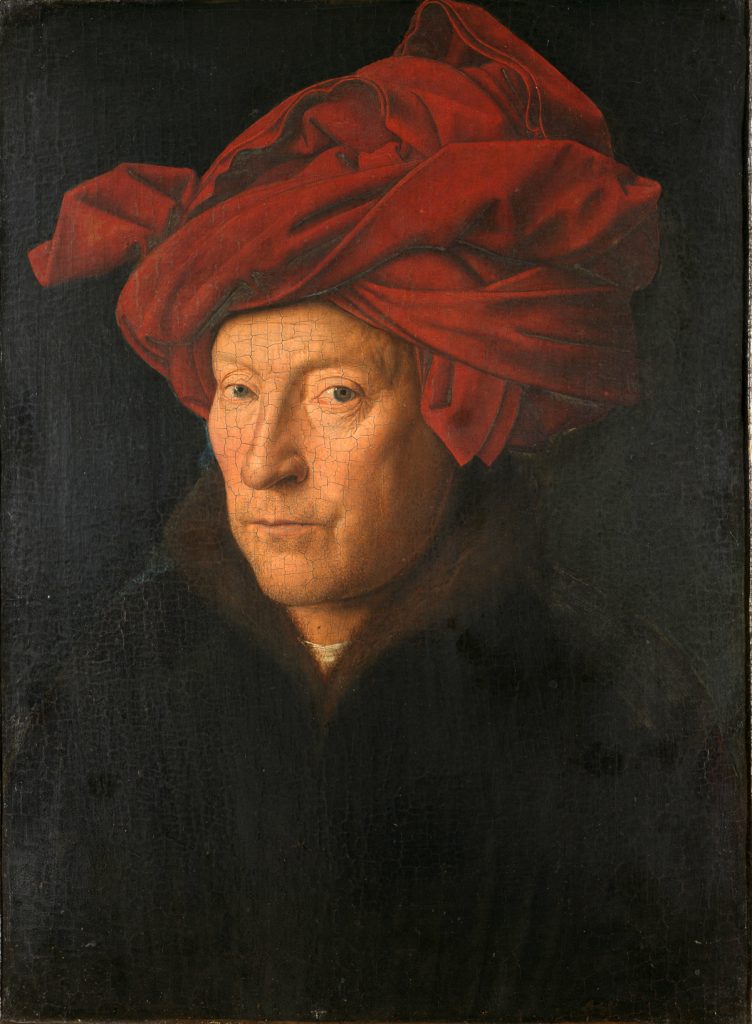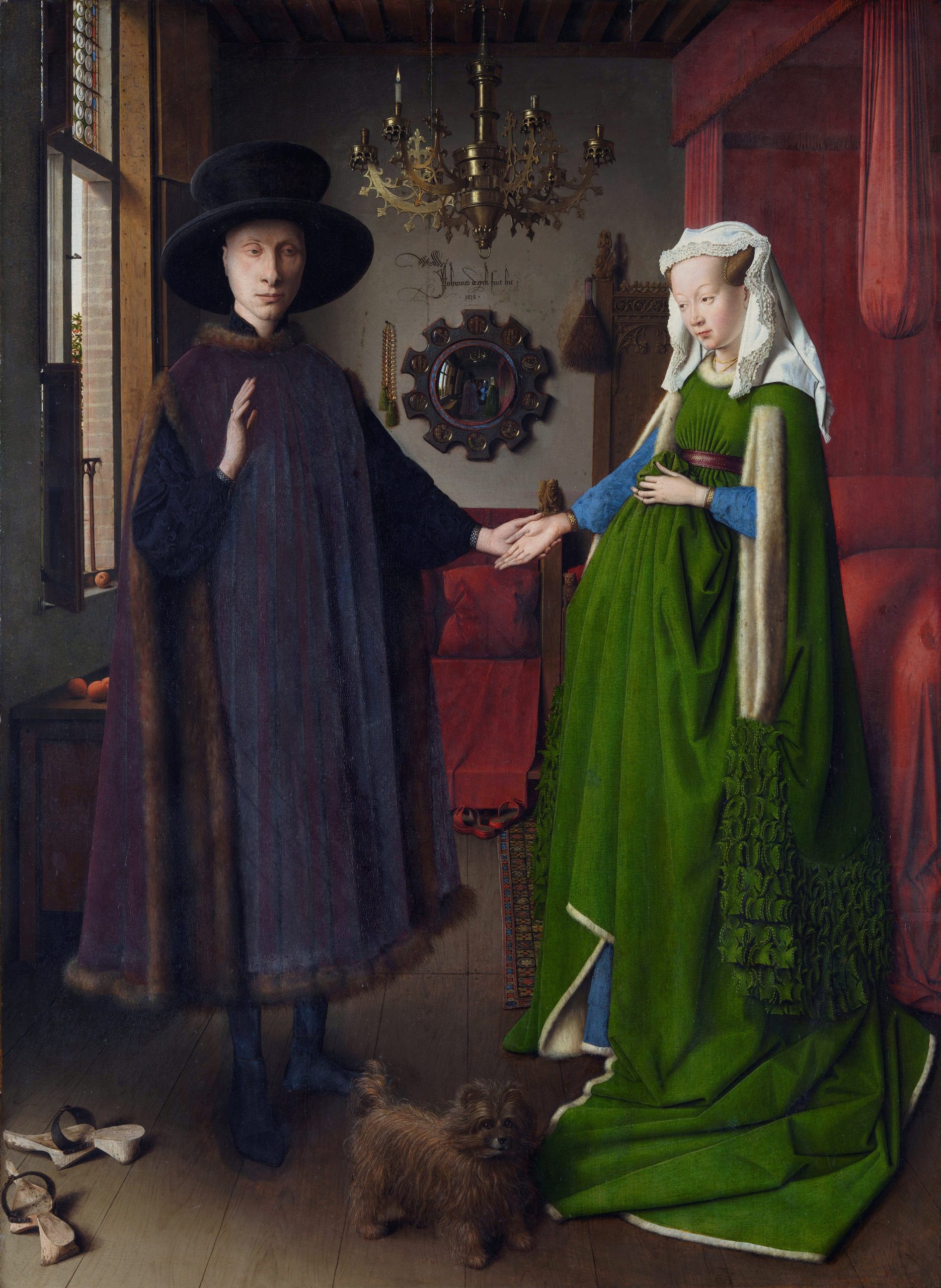Jan van Eyck
Arnolfini Portrait is on display at Merchants’ Place.
Earlier this year the Guardian described the Van Eyck exhibition in Ghent as a “once-in-a-lifetime show” with over half his surviving paintings on display. Unfortunately the exhibition was cut short by the pandemic leaving many of us unable to get to Ghent for the exhibition. There is a virtual tour of the show here.
Working with the National Gallery in London we are able to bring a reproduction of one of Van Eyck’s most well known works to Cromer. .

Jan van Eyck was a Flemish painter active in Bruges who was born in 1390 and died in 1441. He was one of the innovators of what became known as Early Netherlandish painting, and one of the most significant representatives of Early Northern Renaissance art. His technical brilliance and formal balance of style served as a model to generations of painters both North and South of the Alps.
Van Eyck contributed to a revolution in art, switching from egg paint (tempera) to much richer and deeper colours available in oil paint.
Little is known of van Eyck’s origins, but he probably came from Maaseik, near Maastricht, and was of the gentry class. He is first heard of in 1422 working in The Hague for John of Bavaria, ruler of Holland. From 1425 he was at Bruges and Lille as painter to Philip the Good, Duke of Burgundy. In 1428 van Eyck was sent to Portugal to paint Philip the Good’s future wife, Isabella of Portugal.
Arnolfini Portrait
The Arnolfini Portrait is one of those paintings that everyone swears they’ve never seen nor heard of until they see it. “Oh! That one! The one with the pregnant lady wearing that heavy green dress!” They are right about one thing: the dress looks equal to the task of curtaining a large bay window. But they are wrong to assume the woman is pregnant.
Hannah Gadsby, Guardian journalist, said “Not only did Van Eyck have a habit of painting women to look like they were with child even when they were without, but it was also fashionable at the time to look pregnant when you were not.”
Although the room is totally plausible, close examination reveals inconsistencies: there’s not enough space for the chandelier, and no sign of a fireplace. Moreover, every object has been carefully chosen to proclaim the couple’s wealth and social status without risking criticism for aping the aristocracy.
On the back wall, a large convex mirror reflects two men coming into the room, one of whom also raises his arm. Immediately above it is Van Eyck’s signature. Could the man in mirror be van Eyck himself, with his servant, coming on a visit?

